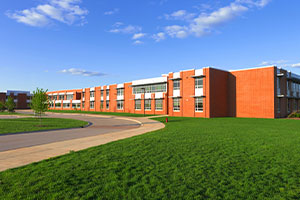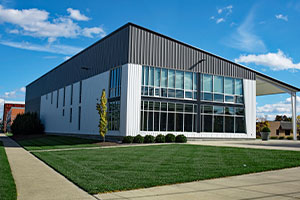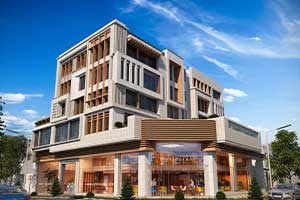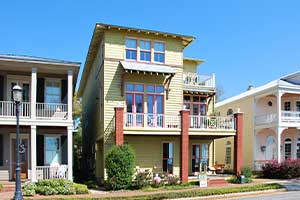
175 Fulton Avenue
Hempstead, NY. 11550
516-481-0052
Hempstead, NY has nearby treatment options including: 3 medicare programs, 0 inpatient rehab, 4 drug rehabs that take PPO insurance like Aetna, 1 drug detox, 4 outpatient treatment programs.

For help finding an addiction treatment center, Call us!
All calls are 100% confidential and free
1-877-882-9275

Hempstead FTRC is committed to helping any person with a drug or alcohol use issue in the Hempstead, NY. area find full recovery. It offers several services - such as inpatient drug treatment, outpatient day treatment, outpatient detox centers, long term rehab facilities, short term rehab centers and others - in line with its belief of the addiction care and rehab modalities that work in recovery. This alcohol and drug rehab also believes that people require individual care and treatment to be able to stop abusing drugs and alcohol.
As such, Hempstead FTRC specializes in activity therapy, 12-step facilitation approach, dual diagnosis drug rehab, group therapy, substance abuse counseling approach, matrix model and more. At the same time, it accepts clients who are persons with eating disorders, child care for clients children, residential beds for client's children, treatment for spanish-speaking clients, seniors or older adults, clients referred from the court/judicial system, and others. This substance abuse treatment center uses care methods that can assist patients to maintain sobriety from the substances abused in the past.
In terms of payment, clients in Hempstead FTRC can pay for services using private medical insurance, cash or self-payment, payment assistance, sliding fee scale, county or local government funds, other state funds and others.

EAC Network is dedicated to helping any person with a drug or alcohol use problem in Hempstead, New York and its surrounding areas find complete recovery. It offers several programs - such as inpatient drug rehab centers, outpatient hospital programs, detoxification centers, long term addiction treatment programs, short term addiction treatment facilities and others - in keeping with its belief of the addiction treatment and rehab methods that work in recovery. This substance abuse treatment center also believes that clients require individual care and treatment to be able to stop abusing drugs and alcohol.
As such, EAC Network has specialized in activity therapy, 12-step facilitation approach, dual diagnosis drug rehab, group therapy, substance abuse counseling approach, matrix model and more. At the same time, it accepts clients who are persons with eating disorders, child care for clients children, residential beds for client's children, treatment for spanish-speaking clients, seniors or older adults, clients referred from the court/judicial system, and others. This alcohol and drug rehab uses treatment methods that can help clients to achieve sobriety and abstinence from the substances of abuse that they have used in the past.
In terms of payment, clients in EAC Network can pay for services using private insurance, cash or self-payment, payment assistance, sliding fee scale, county or local government funds, other state funds and others.

Center for Rapid Recovery Inc is dedicated to helping any person with a drug or alcohol use problem in the Hempstead, NY. area find complete recovery. It offers several services - such as inpatient addiction treatment facilities, outpatient counseling, detox centers, long term rehabs, short term addiction treatment programs and others - in line with its belief of the recovery care and rehabilitation methods that are effective in recovery. This drug and alcohol rehab program also believes that people require individual treatment and care to be able to maintain their sobriety.
As such, Center for Rapid Recovery Inc specializes in activity therapy, 12-step facilitation approach, dual diagnosis drug rehab, group therapy, substance abuse counseling approach, matrix model and more. Similarly, it accepts patients who are persons with eating disorders, child care for clients children, residential beds for client's children, treatment for spanish-speaking clients, seniors or older adults, clients referred from the court/judicial system, and others. This drug and alcohol treatment facility uses treatment modalities that can help clients to maintain lasting and permanent sobriety from the substances of abuse that they have used in the past.
In terms of payment, clients in Center for Rapid Recovery Inc can pay for services using private medical insurance, private pay, payment assistance, sliding fee scale, county or local government funds, other state funds and others.
Fentanyl is a powerful synthetic opioid analgesic that has garnered significant attention in recent years due to its role in the opioid crisis. Here are some essential facts about fentanyl:
Potency: Fentanyl is estimated to be 50 to 100 times more potent than morphine and 25 to 50 times more potent than heroin. Due to its high potency, it is prescribed in micrograms (mcg) rather than the milligrams (mg) typically used for other opioids.
Medical use: Fentanyl is primarily used in medical settings to manage severe pain, such as chronic pain or breakthrough pain in cancer patients. It is also used as an anesthetic during surgical procedures. Fentanyl is available in various forms, including transdermal patches, lozenges, tablets, and injections.
Illicit use: Fentanyl has become a significant concern in the illicit drug market due to its potency and relatively low production cost. Illegal fentanyl is often mixed with other drugs, such as heroin, cocaine, or counterfeit prescription pills, increasing the risk of overdose for unsuspecting users.
Overdose risk: Fentanyl's potency makes it particularly dangerous, as even a small amount can cause an overdose. Signs of fentanyl overdose include slow or shallow breathing, unresponsiveness, pinpoint pupils, cold and clammy skin, and loss of consciousness. Fentanyl overdoses can be fatal if not promptly treated.
Naloxone: Naloxone, also known as Narcan, is an opioid antagonist that can rapidly reverse the effects of a fentanyl overdose by displacing the drug from the opioid receptors in the brain. Due to fentanyl's potency, multiple doses of naloxone may be necessary to reverse an overdose effectively.
Fentanyl analogs: There are numerous fentanyl analogs or derivatives, such as carfentanil, acetylfentanyl, and furanylfentanyl. These analogs can have varying potencies, often significantly stronger than fentanyl itself, which can further increase the risk of overdose and fatalities.
Legal classification: Fentanyl is a Schedule II controlled substance in the United States, indicating that it has a high potential for abuse and dependence but also has accepted medical uses. Illicit fentanyl and its analogs are often classified as Schedule I substances, indicating that they have no accepted medical use and a high potential for abuse.
Addiction and dependence: Fentanyl, like other opioids, carries a risk of addiction and physical dependence. Chronic use can lead to tolerance, requiring higher doses to achieve the same effect, and withdrawal symptoms if usage is reduced or stopped abruptly.
Detoxification: The first step in treating addiction is often detoxification, which involves clearing the body of the substance while managing withdrawal symptoms. This process should be supervised by medical professionals in a controlled environment to ensure safety and comfort.
Medication-assisted treatment (MAT): MAT combines behavioral therapy with medications to address the physical aspects of addiction. For example, medications such as methadone, buprenorphine, and naltrexone can be used to treat opioid addiction, while disulfiram, acamprosate, and naltrexone may be prescribed for alcohol addiction.
Inpatient treatment: Inpatient or residential treatment programs provide a structured environment with 24-hour care and support. These programs typically offer a combination of individual therapy, group therapy, and educational sessions to address the various aspects of addiction and recovery.
Outpatient treatment: Outpatient programs allow individuals to receive treatment while maintaining their daily responsibilities, such as work or school. These programs typically involve regular therapy sessions, support groups, and may also include medication management.
Cognitive-behavioral therapy (CBT): CBT is a widely used therapy that helps individuals identify and change unhealthy thought patterns and behaviors related to substance use. CBT teaches coping skills and strategies for managing cravings and preventing relapse.
Motivational interviewing: Motivational interviewing is a client-centered approach that helps individuals explore their ambivalence about change and strengthen their motivation to engage in the recovery process.
Contingency management: Contingency management uses positive reinforcement, such as rewards or incentives, to encourage abstinence from substances and promote healthy behaviors.
Family therapy: Family therapy involves working with the individual and their family members to address relationship issues and improve communication. This approach recognizes the role of the family in supporting recovery and aims to create a healthier family dynamic.
Support groups: Participation in support groups, such as Alcoholics Anonymous (AA) or Narcotics Anonymous (NA), can provide peer support and encouragement throughout the recovery process. These groups offer a community of individuals with similar experiences who can share their stories and coping strategies.
Aftercare and relapse prevention: Long-term success in recovery often involves ongoing aftercare, which may include regular therapy sessions, support group meetings, and development of a relapse prevention plan. This plan helps individuals identify potential triggers and develop strategies to cope with cravings and high-risk situations.
Alcoholism, or Alcohol Use Disorder (AUD), can lead to liver damage over time as the liver struggles to process excessive amounts of alcohol. Liver damage due to alcoholism can manifest in various ways, with signs ranging from mild to severe. Some common signs of liver damage from alcoholism include:
It is important to seek medical attention if you or someone you know is experiencing signs of liver damage from alcoholism. Early diagnosis and intervention can help prevent further damage and improve the chances of recovery. Treatment may include abstaining from alcohol, making lifestyle changes, and addressing any underlying health conditions contributing to liver damage.
National Non Profit Helpline - 1-877-882-9275
Our National Non Profit Helpline is a 24/7, 365-day-a-year treatment referral and information service for individuals and families faced with mental and/or substance use disorders.
All calls are strictly confidential
Our service provides referrals to licensed treatment facilities, support groups, and community-based organizations. You don't have to struggle alone with addiction. Help is just a phone call away. Call 1-877-882-9275 now to get the help you need and deserve.
© Copyright 1998 - 2022 All Rights Reserved. Content is protected under copyright laws, do not use content without written permission.